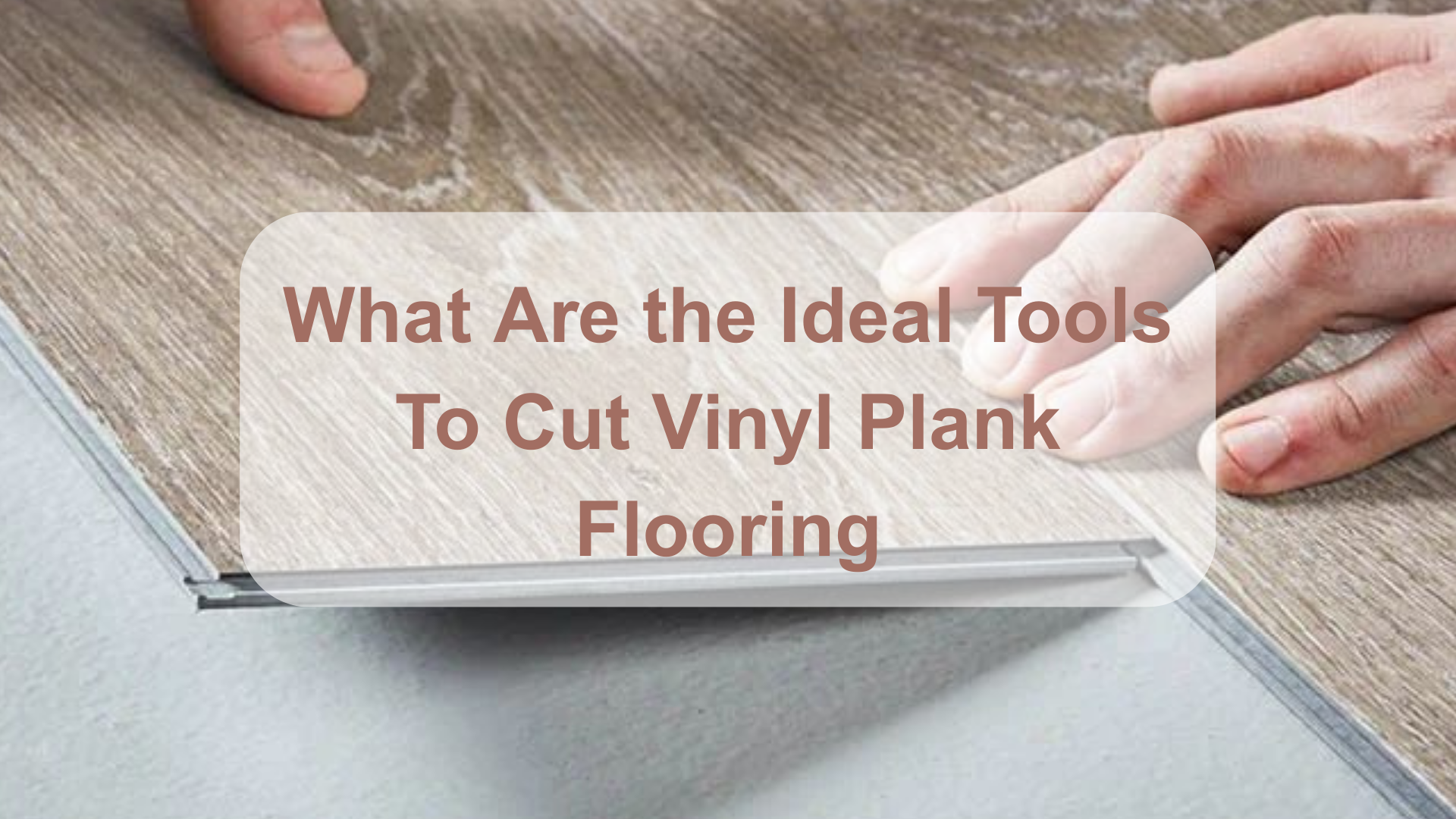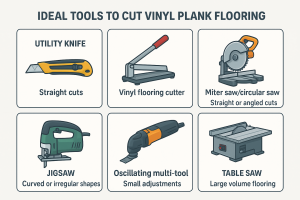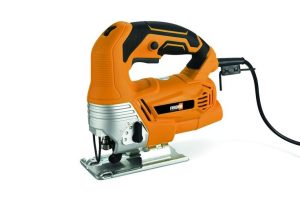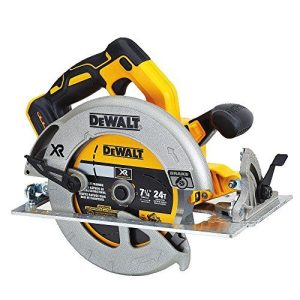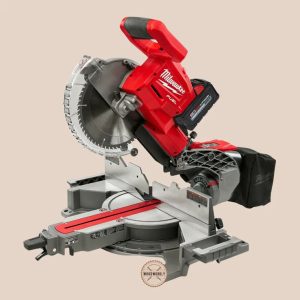Using the right tools to cut vinyl plank flooring makes the job easier, faster, and more accurate. Good tools help beginners avoid mistakes, reduce waste, and achieve a clean, professional-looking finish. They also build confidence during installation and ensure the flooring lasts for a long time.
The process of installing vinyl plank flooring requires care. They often face jagged edges or uneven seams when using the wrong tools. It makes the floor look unprofessional and weakens durability.
We explain the ideal tools to cut vinyl plank flooring. Also, using the right tools helps beginners and professionals avoid mistakes. They reduce material waste and save time. Also, a clean cut ensures a smooth, polished finish.
Understanding Vinyl Plank Flooring
The vinyl plank flooring, including luxury vinyl plank (LVP) and stone-plastic composite (SPC), imitates wood or stone patterns. They are durable, water-resistant, and easy to maintain. Also, plank layers—protective top, design layer, rigid core, and backing—affect cutting methods. They need different tools for thin LVP and thick SPC planks. It ensures smooth cuts and prevents chipping. Also, checking plank thickness before cutting saves time.
Best Manual Tools for Cutting Vinyl Plank Flooring
The manual tools are simple to use, and they give beginners full control for clean and accurate cuts.
Jigsaw
The jigsaw with a fine blade cuts curves, corners, and vents easily. They must operate at low speed to avoid catching. Also, clamps or a backer board keep planks stable. It ensures safety and clean edges.
Circular Saw
The circular saw is fast for large projects. They can cut multiple planks at once. Also, they must use a blade for vinyl or laminate. It prevents chipping. They should wear goggles and a dust mask. Also, it protects health and keeps the workspace safe.
Miter Saw
The miter saw makes precise angled cuts. They secure planks firmly before cutting. Also, a fine-toothed blade reduces splintering. It allows multiple planks to be cut to the same length. Also, it saves time during professional installations.
Utility Knife
The utility knife is simple and effective. They work well for straight cuts. Also, scoring the plank multiple times along a straightedge allows it to snap easily. They use a sharp blade to prevent tearing. Also, this method is quiet, dust-free, and ideal for indoor DIY projects.
Snap Cutter
The snap cutter, or guillotine cutter, is made for vinyl flooring. They work fast and give straight, clean cuts. Also, it is dust-free and easy for repeated cuts. They must check the cutter width and thickness limit. It ensures it fits every plank
Essential Accessories for Clean and Accurate Cuts
The right accessories make cutting easier and precise. They also improve the final floor finish.
Measuring Tape and Straightedge
They must measure carefully. Also, a straightedge guides cuts. It ensures straight lines and correct plank size.
Carpenter’s Square
The carpenter’s square keeps angles right. They use it for crosscuts or transitions. Also, it prevents gaps and produces professional results.
Sanding Block
After cutting, edges may be rough. They should sand lightly. Also, it prevents snags and ensures a smooth finish.
Safety Gear
They must always wear gloves, goggles, and a dust mask. Also, using clamps or a stable surface improves control and safety.
Step-by-Step Guide to Cutting Vinyl Plank Flooring
Prepare the Workspace
The workspace should be clean and well-lit. They can protect surfaces with scrap boards or mats. Also, it prevents scratches and makes work easier.
Measure and Mark
They should measure the plank carefully. Also, mark the cutting line with a pencil. Using a straightedge ensures the line is straight. It helps guide the tool accurately.
Choose the Appropriate Tool
The tool depends on the cut: utility knife for straight cuts, jigsaw for curves, miter saw for angles. Also, snap cutters speed up repeated straight cuts. They reduce effort and improve precision.
Cut the Plank
They follow the tool instructions closely. Also, scoring and snapping works for manual cuts. Power tools require steady, guided movement for accuracy.
Smooth the Edges
They lightly sand edges after cutting. Also, smooth edges prevent gaps. It improves the floor’s appearance and fit.
Common Mistakes to Avoid When Cutting Vinyl Plank Flooring
The most frequent mistakes include dull blades. They cause jagged edges and tearing. Also, wrong measurements lead to ill-fitting planks. Skipping safety gear can cause injuries. Also, unsecured planks can shift and create uneven cuts. Ignoring acclimatization causes gaps later.
Manual vs Power Tools: Which Works Better?
The choice depends on project size, skill, and budget. Manual tools are precise and cheap for small projects. Power tools are fast and consistent for big installations. Also, they reduce effort and increase efficiency. They should consider dust, noise, and cleanup. Also, proper tool selection keeps the workspace safe and professional.
Conclusion
The process of cutting vinyl flooring requires care and the right tools. Also, manual and power tools each have a place. They can avoid mistakes and save time. Also, accessories like measuring tapes, squares, and sanding blocks improve accuracy. Following this guide ensures clean, precise cuts. Also, it guarantees a professional, durable, and attractive floor.

